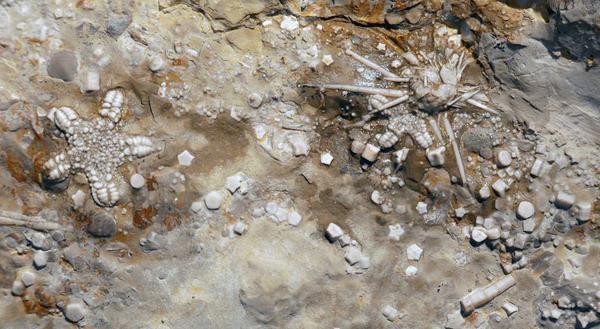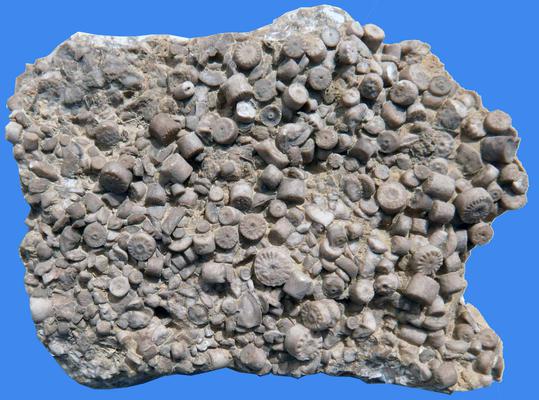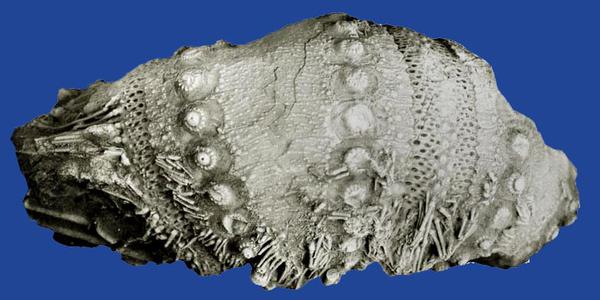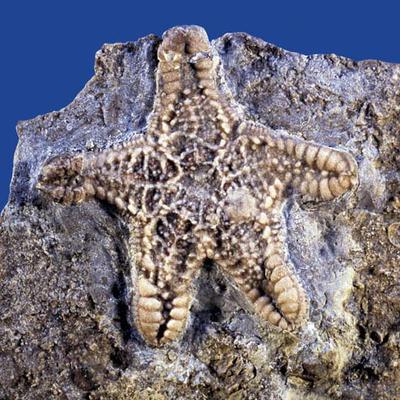Echinoderms

Introduction
During history of life on earth almost all animal phyla managed to step on the solid land. This does not apply to the echinoderms, which, however, inhabit all marine habitats from coral reefs to abyssal depths. Most echinoderms have a pentamerous symmetrical internal skeleton composed of porous ossicles, which …
Sea Lilies

Only one group of crinoids likely survived the end-Permian extinction and gave rise to all post-Palaeozoic and hence to all living crinoids. Closely related with these ancestral crinoids are the Holocrinidae, from which the extant Isocrinidae and the feather stars descended. Holocrinid remains are found in the Early Triassic of …
Sea Urchins and Sea Cucumbers

For a long time, Muschelkalk sea urchins were almost exclusively known from isolated spines and platelets of their corona. During the last decades complete articulated specimens were found with their spines attached. Like the Middle Triassic asteroids they combine ancestral and advanced characters. The genera Triadotiaris and Serpianotiaris were dispersed …
Starfish and Brittle Stars

Only a few Middle Triassic asteroid genera are known, but each of these was described from Muschelkalk specimens. Best known is Trichasteropsis, a genus defined by a mixed pattern of ancestral and advanced characters. Trichasteropsis was presumably preying on small bivalves and gastropods. The radiation of the Asteroidea, which made …
